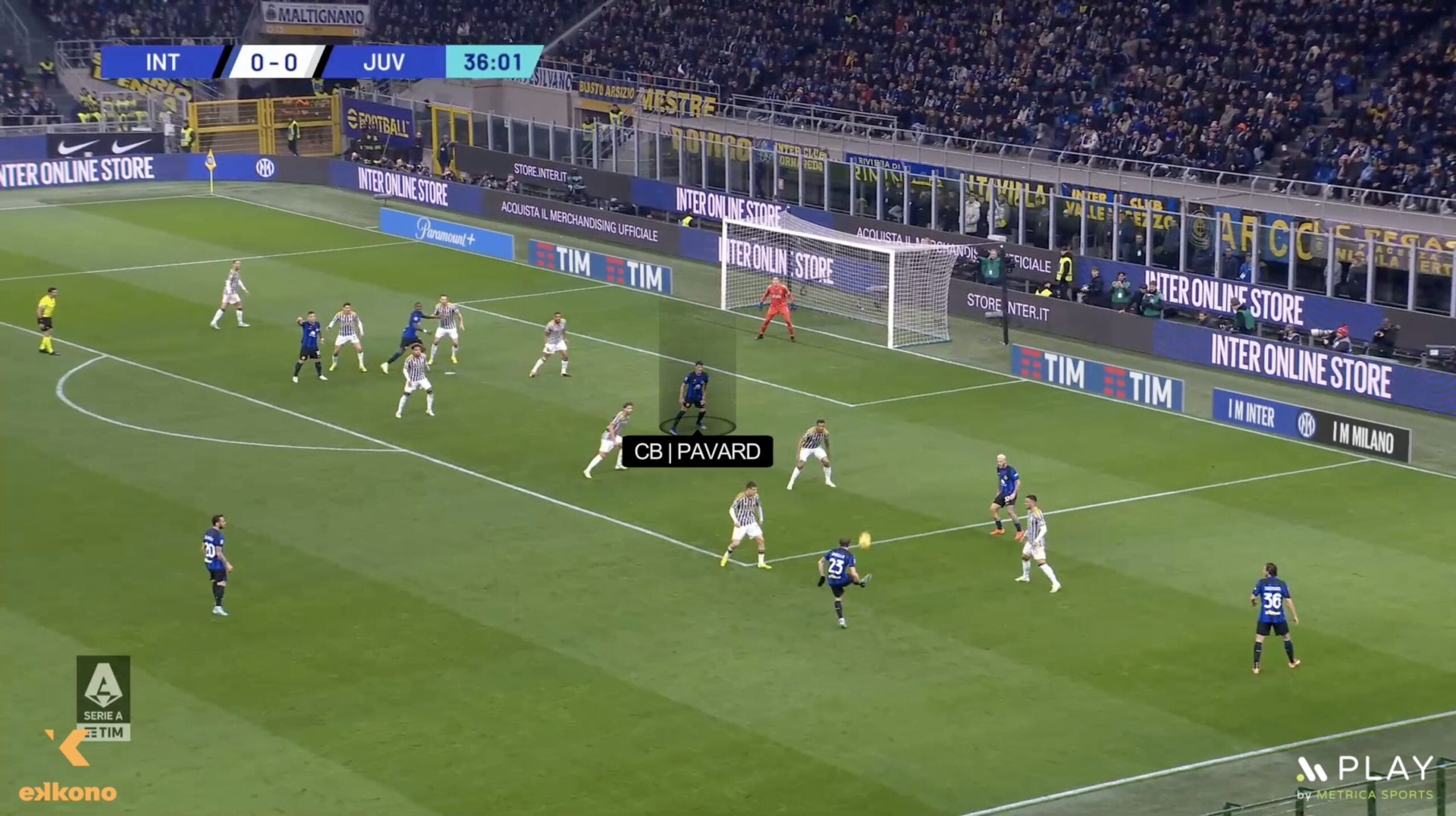
Inter Milan was the 2023 Champions League runner-up and is playing some great football to dominate the Serie A in Italy. In this article, we analyzed the key aspects of the game employed by the team led by Simone Inzaghi, which have provided them with exceptional performance. They are known for their fluid play with the ball, their verticality, their ability to play associative, and at the same time, their aggressiveness in defense. In this tactical analysis, we will examine the fundamental details that are propelling the Italian team to the top of European football.
Lautaro Martínez
In analyzing a key factor of their gameplay, it’s crucial to note that Inter Milan operates with a 3-5-2 formation. Within this framework, the two strikers, typically Lautaro Martínez and Marcus Thuram, play pivotal roles. Lautaro, the 2022 World Champion with Argentina, poses a significant threat with his movements. He often drops away from the opposition’s back line to receive the ball in the spaces between their defense and midfield. This maneuver forces a defender to choose: either mark him and leave a gap behind or allow him space to turn and create vertical danger. Usually, defenders choose to follow him, leaving an empty space behind to be attacked by a teammate, becoming an effective tactic for the Italian side.
Additionally, in this situation, if the defender does not come out to press him, Lautaro has the ability to quickly identify the situation and turn to generate danger vertically. This ability to adapt and read the game is one of the key strengths of Inter Milano in their tactical system.
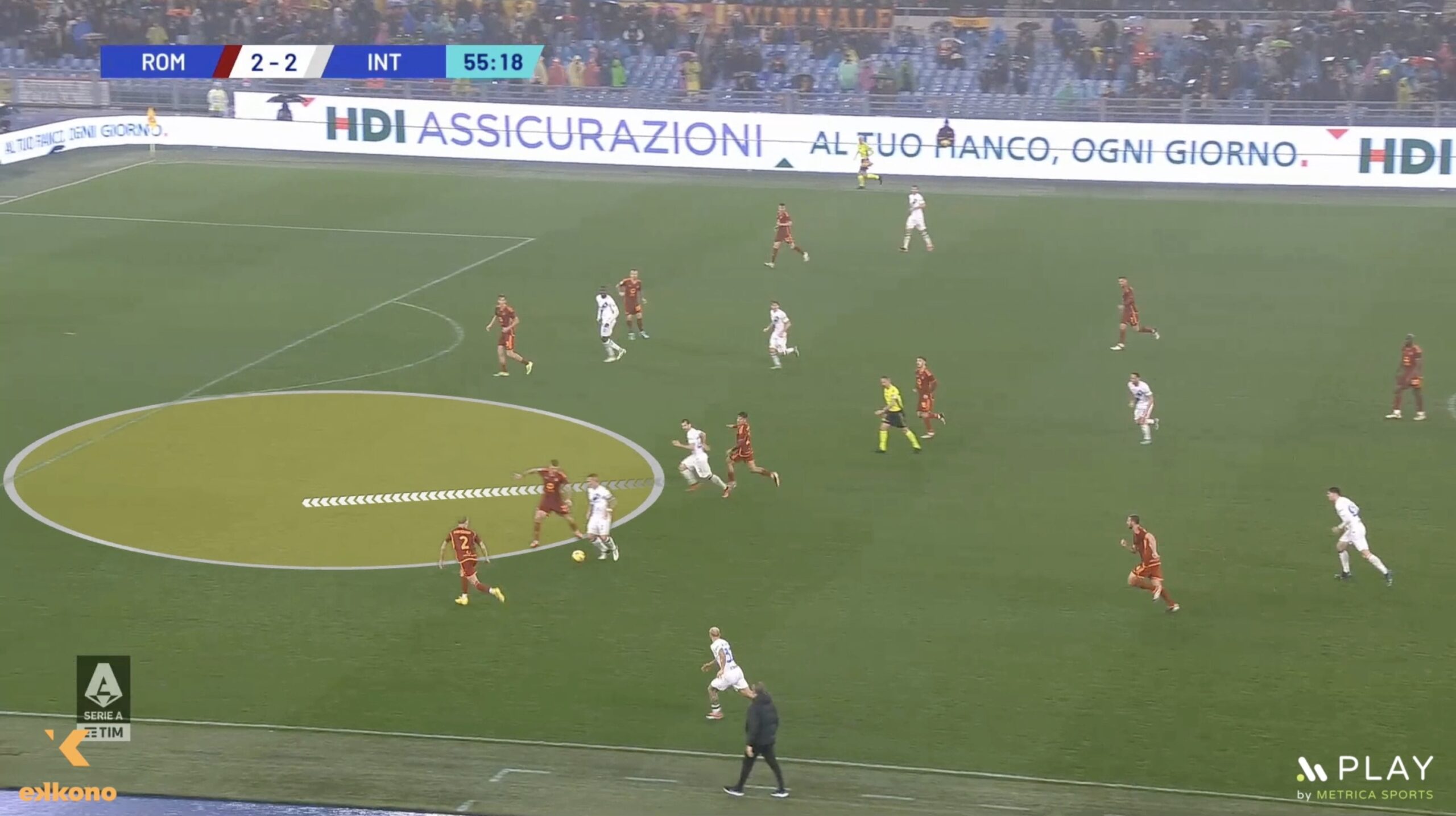
Lautaro 2
In the example, Lautaro is followed by a defender, creating a space behind him which is used by Mkhitaryan who then crosses for Thuram to score.

Lautaro 1
In this action, Lautaro drops back and the defender doesn't follow, allowing him to turn around and play deep to a teammate who is making an unmarking movement towards the space.
Central Backs in the Attack
Another key element in disrupting the opposition’s defense is the active role that their central backs play in the attack. With a three-center-back setup, Inter Milan leverages ball circulation to create advantages. Once the ball is played to the center back in advantage, he often drives forward, drawing opponents and opening space for teammates. In addition to their ability to carry the ball, they are also capable of identifying free spaces and attacking them, whether in the middle of the field or even attacking the opposing box as forwards, allowing them to create goal opportunities.
Their central backs join the attack when identifying opportunities or weaknesses in the opposing defensive line, occupying unusual positions for a central defender with the aim of surprising and generating advantages. Simultaneously, the rest of the team adapts their positions to maintain balance during these aggressive, strategic moves. This allows the team to always show a rational occupation of the spaces and a balanced structure.
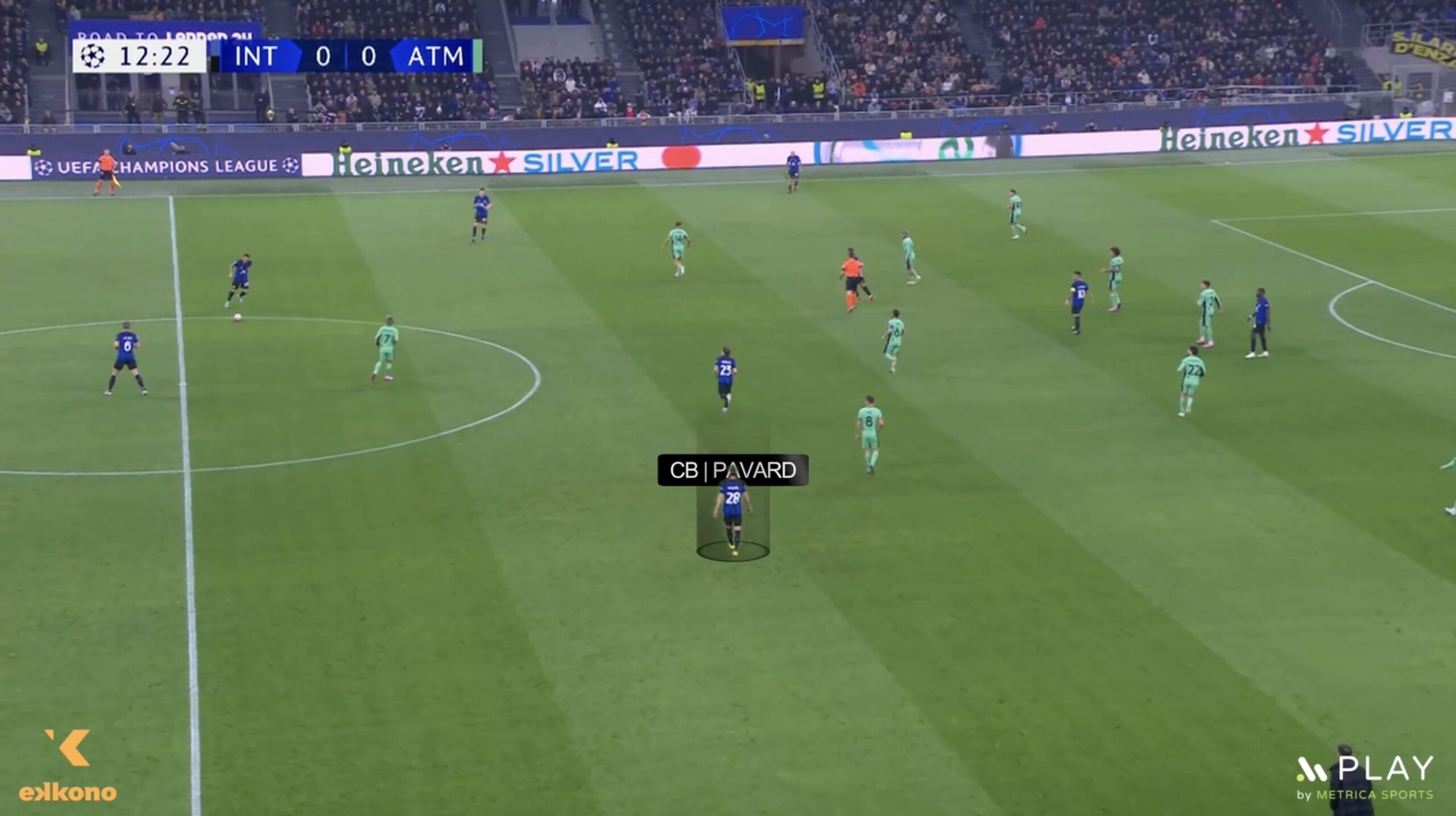
Pavard_1
Pavard (CB) gains depth during the ball circulation, so that the team can find him in advantage to progress. He then attacks aggressively the final third.

Pavard 1
Here, we can see a clear example of how Pavard (CB) occupies a useful position inside the opposite box during a crossing situation. The team rebalances the space, with Çalhanoğlu (CM) occupying the space left by Pavard.
Offensive Transition
It’s essential to highlight Inter Milan’s effectiveness during offensive transitions, particularly when they regain possession. The team exhibits remarkable directness, especially during open recovery transitions, signaling a collective intent to launch rapid attacks. Players from all positions are ready to contribute to the offense, exploiting any available space. Upon regaining the ball with time and space, the player in possession drives forward towards the opposition’s goal, supported by teammates who quickly position themselves to utilize potential gaps.
Conversely, in closed transition scenarios where progression is not possible, they are able to transform the situation into an open transition by using one or two security passes. Their principles are very clear in these situations, showing a clear priority of moving the ball out of the dense area and aunching a quick attack towards the opponent’s goal.
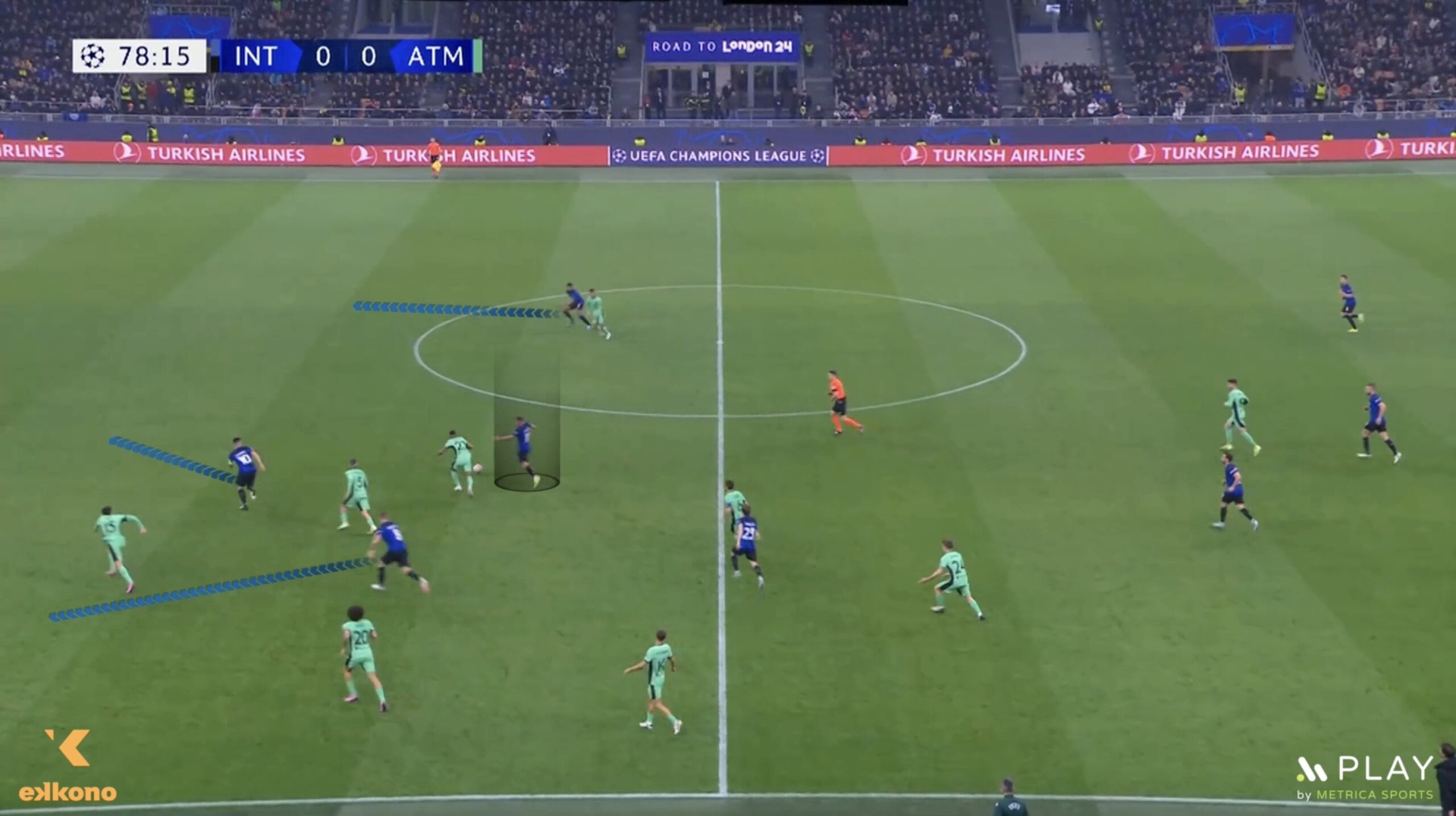
Transition 1
In this offensive transition, Inter players occupy all three attacking channels during an open recovery transition. This leads into a chance that ends with a winning goal.
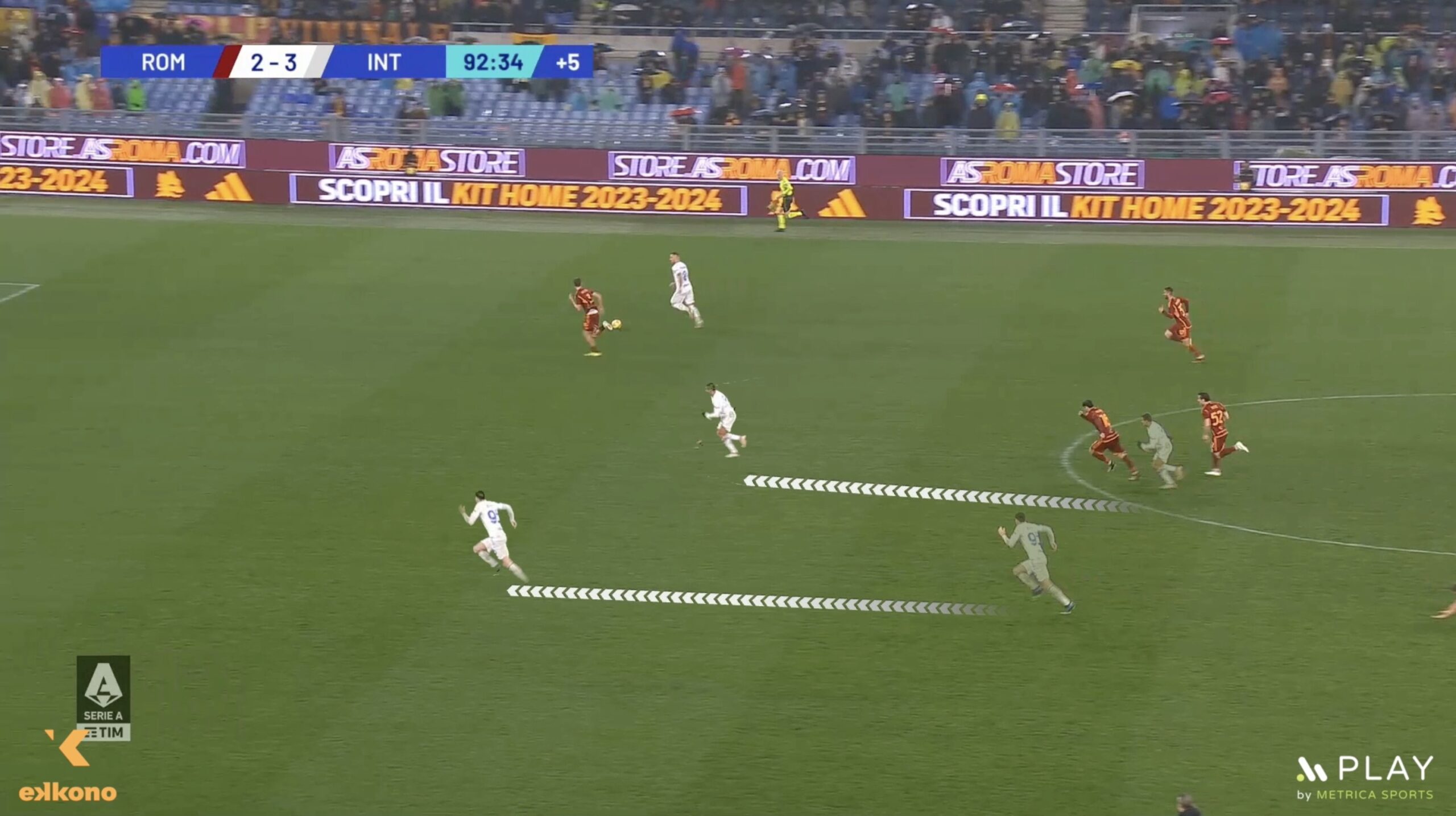
Transition 2
In this semi-open recovery, we can see Bastoni (CB) attacking the left channel, acting as a winger. This is a clear principle of Inter, with players moving forward aggressively in transition, regardless of their position.
Conclusion
In summary, the Italian team displays a wide range of resources in their offensive play, which has led them to create numerous opportunities for danger and, as a result, to achieve excellent performance currently. Their offensive potential places them among the great teams of Europe today.
Don’t forget that you can watch the full analysis with videos. Not a member? Check our membership plans and sign up now.
